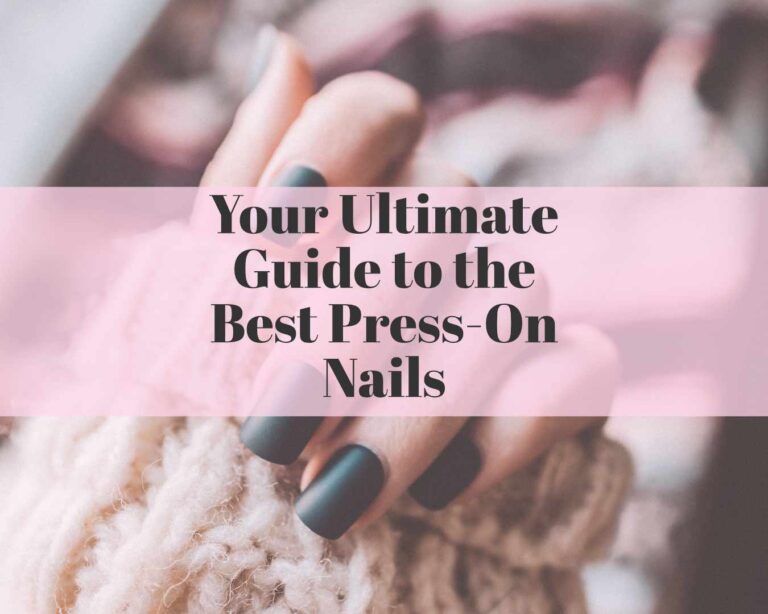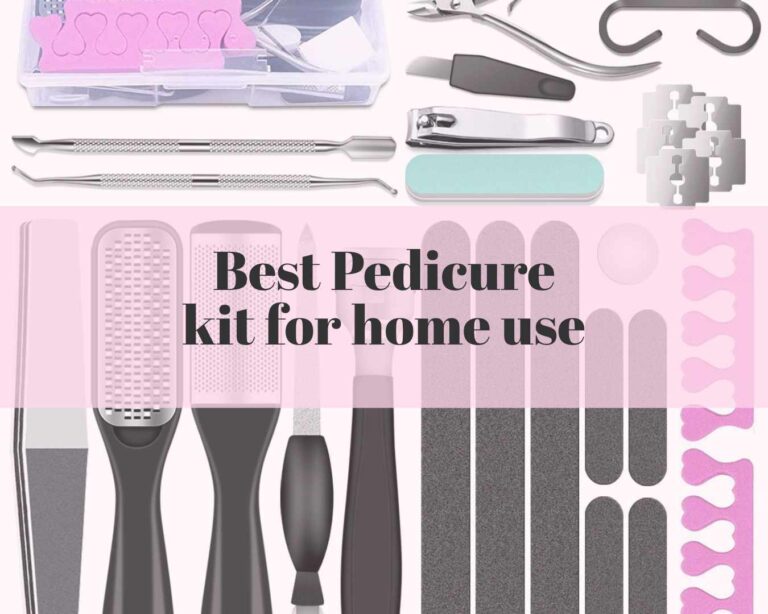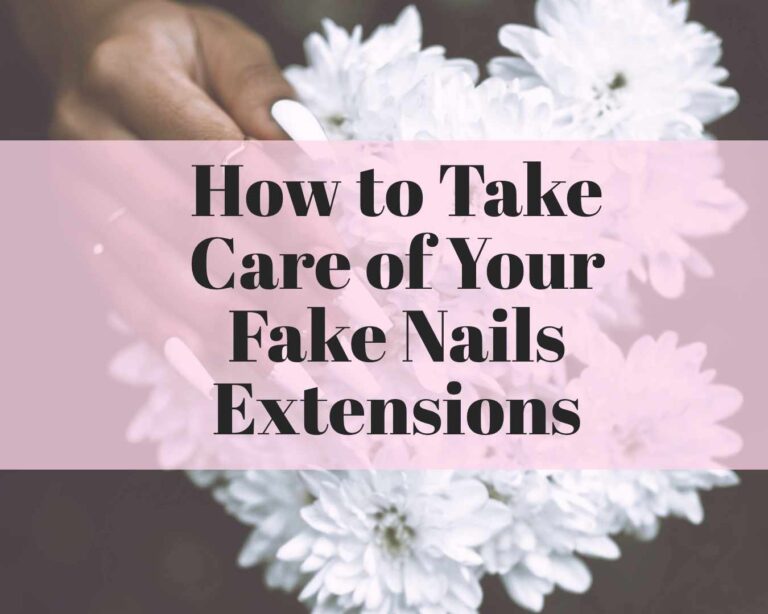

Simple tips and tricks for when doing nails
I remember when I started my journey as an aspiring nail technician, I felt overwhelmed with all of the information that I was presented with. Not knowing where to start and what knowledge to take in can be quite scary.
In this article, I am going to outline some tricks that I learned throughout the years like applying tips, using forms, acrylic hacks, and more. These things have helped me work faster and better and become the nail technician I am today.
Hacks for when working with nail tips
Tips are something that you have to work with daily as a nail technician. So learning how to work more efficient is a great idea for becoming a successful nail tech. Some things that I can outline are:
- Use translucent tips: I know many beautiful coloured tips seem great, but trust me. I have a cupboard full of coloured tips that I never use. Translucent or nude tips are the best as you can see if the glue is reaching everywhere on the nail it shoulds. You can easily check or trapped bubbles under the tips and slightly change the positioning of your hand to get rid of the air underneath the tip. If you leave trapped bubbles underneath the tips it can cause the tips to lift, and not only that but can cause water to become trapped underneath the extension which will create the perfect breeding ground for bacteria. Another reason that people use coloured tips is for creating french nails. But this is not the best method, as the type of french you do on someones’ nails depend on the size of their nail beds. No ones’ nails are the same. So the tips might look great on me but look horrible on someone else. I find that creating my french design using the reverse french method works great. I can create the perfect smile line that looks elegant and classy.
- Don’t use too much glue: If you flood the tip with glue it will pour from underneath the tip once pressed on to the nail and waste your product. It will take much longer for the tips to stick to the nails like this as the glue will take longer to dry. The glue will also flood the sidewalls of the nails which are a pain to clean and can cause discomfort for your client when their skin stickers to their nail.
- Bend the tips a bit before sticking them on to the nails to create a bit of a c-curve: A c-curve creates a natural-looking extension and also provides the nails with extra strength making the extensions more durable.
- When adhering the tips to the nails hold the tip at a 45-degree angle to the nail and then press it down this will help you to align the edges of the tip with the sidewalls of the nail and will result in a perfect straight application. This will also press out any trapped air from underneath the tip. Once you’ve held the tip in place for a few seconds, use the tips of your nails to press down the sider of the tip to the natural nail. This will help the tip to adhere to the nail completely as some nails are flatter than others and tips have a generic-sized curve.
- Press the front of the tip with your thumb when cutting them: as this will prevent the tips from shooting everywhere and potentially injuring your client.
- Remember to file the shine from the tips: I see a lot of people don’t file the tips any more. Gel generally will not adhere to a smooth or shiny surface. Therefore if you don’t file the top of the tips gel will not adhere properly and start to peel.
Tips and tricks to make working with nail forms easier
- Pinch the tip of the form before applying it to the nail for ease of application.
- Use your nail form sticker to create a nail bed for bitten nails: If you have a client with severely bitten nails you can take the round sticker of the form and cut it in half. Stick it to the back of the form and use it as a makeshift nail plate.
- Stick the round form sticker at the back of the form for extra strength.
- Be careful when applying the form to not press it too hard as you might hurt the client by pressing into the hyponychium (the sensitive skin under the nail).
- Use a pinching tool with forms to create a natural-looking c-curve under the nails. Note that using a pinching tool should never hurt your clients. If they complain that it feels uncomfortable adjust the tool immediately. As continual incorrect use can cause the nail plate to separate from the nail bed.
- Don’t throw away the form backing paper as you can use it to create 4D acrylic art like roses and you can also use it as a palette for your art paint.
- Ensure that the form is aligned with the nail when applying forms to check the nail from the side.
- You can use forms and hard products like acrylic to adjust nail growth. For instance, if your clients’ nails grow upwards you can trim them and place a form underneath. Build the nails up in the right direction with a product like acrylic. The natural nails can be guided to grow correctly. Just the same with severely curled nails or nails growing downwards.
Hacks to file and shape nails like a pro
Most of what determines how nails look when you’re done will depend on the shaping of the nails. So you have to learn the right technique for filing and shaping the nails.
- Press down on the part of the nail where the tip and the natural nail come together when filing long tips. This will help limit discomfort for your clients.
- When filing long natural nails support the nail underneath with your finger while filing. This will prevent the nail from bending which will cause pain and discomfort for your client, and it will also prevent the nail from breaking.
- When shaping extensions in an almond, stiletto, or coffin shape, let your nail clipper do most of the work. Cut the edges of the nails and use that as a starting point for filing. This will allow you to create beautifully shaped nails every time. If you are afraid of shaping one side of a nail more than the other, imply count every time you file and file the other side the same amount of times.
- To create easy round or oval nails simply put your file underneath the extension and file the nail underneath while keeping the file parallel to the skin.
- Ask your client to turn their hands around when shaping. This angle is the way your clients see their nails. Nails might look fine when viewing them from the top but another perspective will help you to ensure the shaping is correct.
- When filing, take each of your clients’ nails, for example, pinky against pinky to determine if the nails are the same length. You should also view the nails from the bottom as the nails might seem the same length but if some nails have a longer nail bed they will e shorter than the rest when measuring the extension. Another way to determine the length of the extensions is to put a nail form against each nail and to look at the number on the form. Just make sure to put the form at the right place where the nail stops and the extension begins. This can also be done for long natural nails.
- Turn the nails around and clean any product that might have run underneath the nails. This will finish off your work as forgetting this step can leave your work looking sloppy and unfinished. Once your done cleaning underneath the nails make sure the shape of the nails is correct and unaltered, as filing underneath the nails can modify the shape of the nails.
Tips for when applying acrylic nails
Acrylic can become quite expensive if not used correctly. Knowing how to work with it correctly and some tips can save money and make working with it much more enjoyable.
- Use a small dappen dish to use less monomer. This is very economic as you use a little bit at a time and if you accidentally tip the dish not much will be wasted.
- Apply thin amounts of colour and encapsulate it with clear. Colour (especially highly pigmented colour) can sometimes be tricky to work with. I find it saves a lot of time applying thin amounts of colour and encapsulating it with clear.
- Instead of placing your cuticle bead close to the cuticle, place it near to the middle of the nail. This way you can position the nail so that the product will run downwards and self-lever, and you can press the bead into the cuticle with ease. This will minimize the risk of flooding the cuticles which is horrible to clean. You can also better control the bean and create flush natural-looking cuticle areas.
- After your done applying acrylic to your clients’ nails, keep your brush in the left-over monomer. I usually do this until I’m done filing. This will allow any trapped acrylic to dissolve and be released from the bristles once you wipe your brush on some kitchen paper. Your brush will be clean and free of any acrylic that would harden and ruin the bristles.
- When creating extreme 3D or 4D embellishments like roses for the nails, rather create them separately on a piece of nail-form backing paper and adhere them to the nails afterwards. The acrylic will not stick to the backing paper and is easier to manipulate and mould than if you’ve placed it directly on to the nails.
- When colour-blocking nails, use a crafting knife to create sharp and crisp edges. This will minimize the amount of filing that needs to be done.
- When applying highly pigmented acrylic first apply a thin layer of clear acrylic or base gel. This will protect the natural nails from getting stained and will create a protective barrier when filing the nails. Instead of accidentally filing through to the natural nail you will know to stop at the clear coating.
- Use a smile line cutter to cut the perfect smile line. They come in a range of different shapes and sizes, not just the classic oval smile line.
Other super useful tips for doing nails:
- Never apply a top coat over rhinestones as this will dull the shine.
- Stick rhinestones to the nails using base gel instead of glue. This will allow the rhinestones to last a lot longer.
- Use gel top coat or builder gel to create a type of glass effect like when creating a 3D clock nail design or 3D eyes.
- Use stamping gel for nail art. It’s super opaque and a little bit goes a long way. It is a lot like acrylic paint but doesn’t air dry.
- When taking pictures of a finished set, don’t apply cuticle oil until the picture has been taken. Cuticle oil will cause the skin to look shiny and the nails to look dull. If your clients have super dry hands simply apply small amounts of moisturizer to the areas without touching the nails.
- Use extra lighting when taking pictures. I have a Flexi LED lamp so I bend it down low and turn it until I have the best lighting. You can also add ring lights or even smaller selfie lights. Never take pictures with the flash though as this will completely change the look of the nails and won’t look professional.
- Apply top coat over embellishments like pearls, as the paint will start to chip and leave the pearls looking bad changing the whole vibe of the nails.
- When applying topcoat to 3D or 4D flowers or characters, apply thin amounts and go over with a dry gel brush to wipe off the excess and to keep the details of the design crisp. You need to add a top coat otherwise the acrylic will get dirty.
- When creating glitter sugar nails, first apply a solid color underneath. This will create the most opacity even if the glitter doesn’t fully cover each piece of nail it will seem like it does.
- When creating sweated nails, first apply the matt top coat before you start drawing the designs. It will create the best 3D effect.
Conclustion
Sometimes it’s possible to work smart and not hard in this industry. Most of what I know has taken me years of trial and error and I had to figure almost everything out on my own. I hope this post will prove valuable for other new nail technicians.










